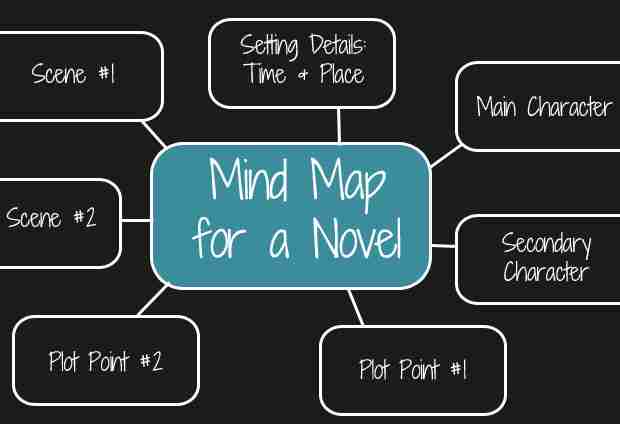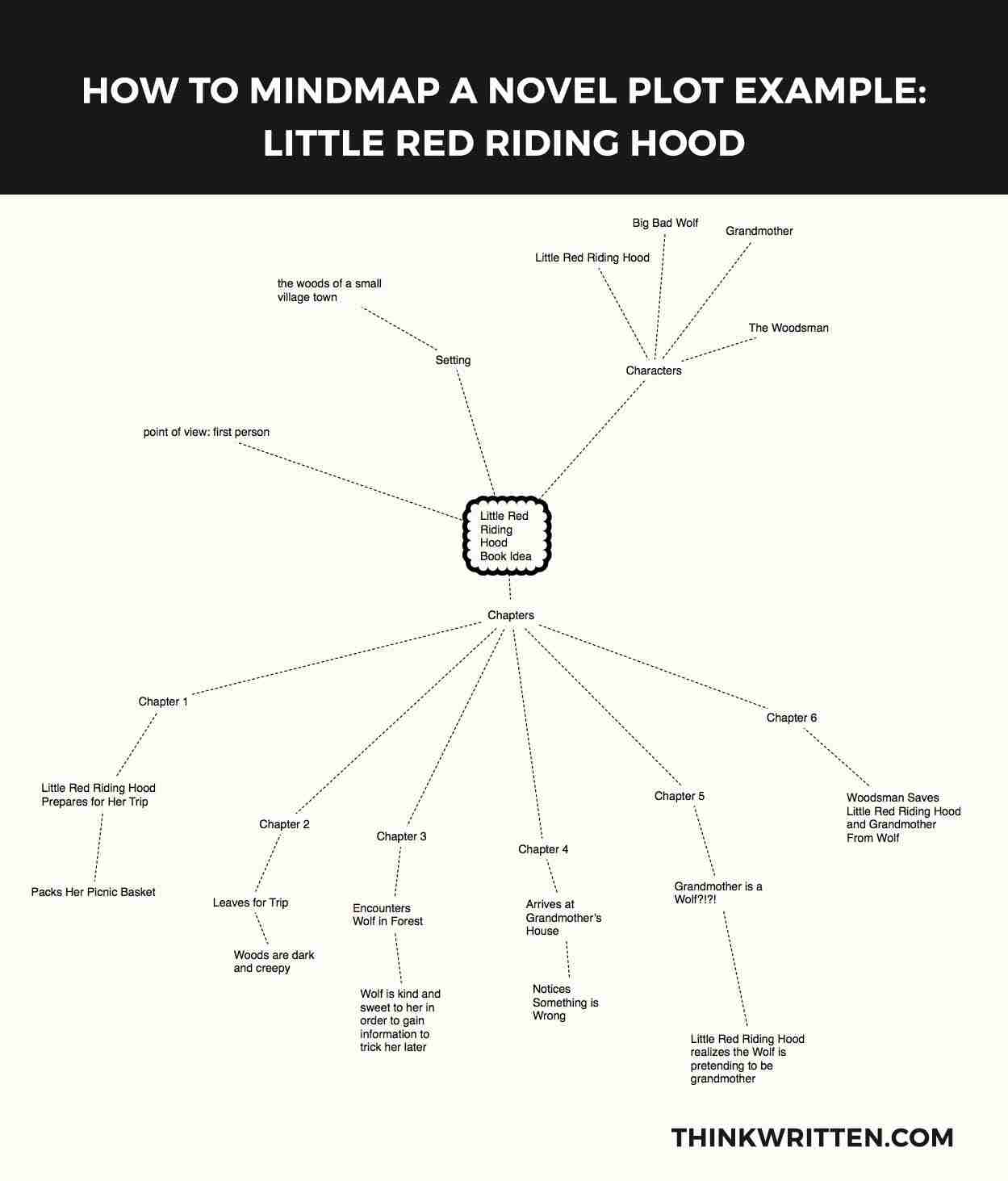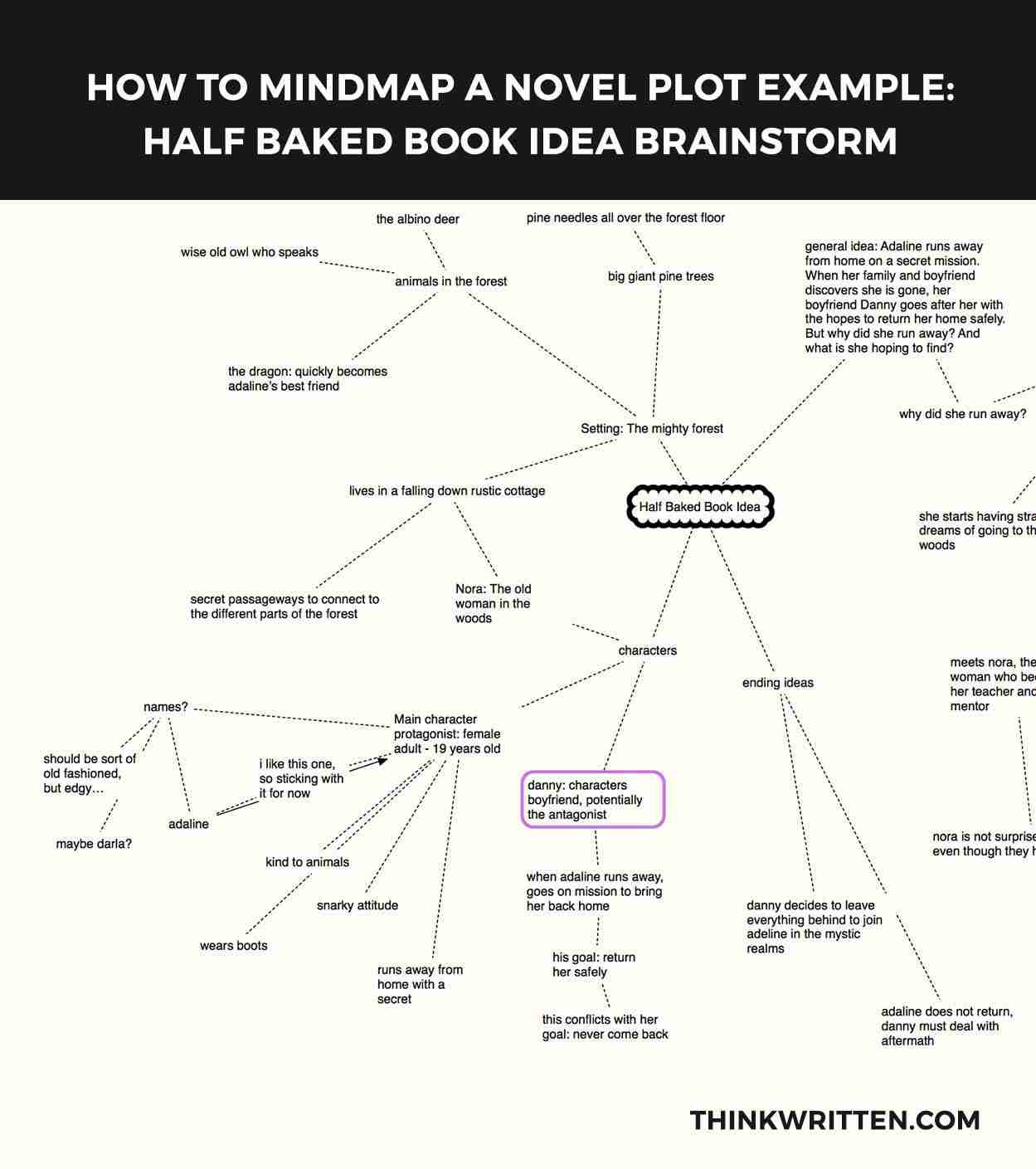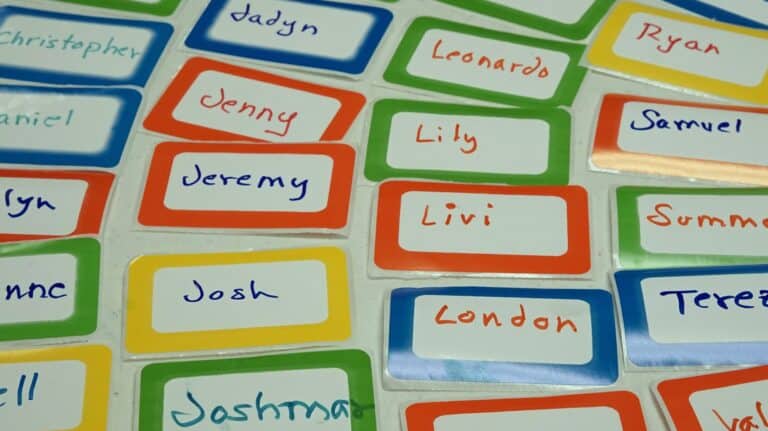We may receive a commission when you make a purchase from one of our links for products and services we recommend. As an Amazon Associate we earn from qualifying purchases. Thank you for support!
If the idea of a traditional outline seems intimidating, creating a mind map for writing your novel might just be the right solution for you. In this post we’ll share the basic process of how to mind map a novel plot, as well as some tips to make it an effective plotting strategy that works for you.
What is a Mind Map and Why Should I Use One to Plot My Novel?
A mind map is a visual representation of ideas and how they all relate to one another. Mind maps are great for brainstorming ideas, keeping organized, and can help you make progress in writing your book.
While there are no set rules for what your mind map should look like, they generally do follow some basic similarities. Typically, a mind map is created on either a blank sheet of paper or on a blank screen if you are using a mind map software tool such as Scapple.
The mind map begins with a central topic in the middle, and then new ideas can be added, moved and connected to different ideas as you begin to brainstorm and think of different story lines.
Novel Plotting Mind Map Examples
One of the easiest ways to understand how to mind map your novel is to look at a few examples. With just a few different examples, you can easily see the many different ways a mind map can help you in brainstorming for ideas and organizing the flow of ideas!
Note: If you like these mind maps shown below, each of these mind map examples we use below were used with the software program Scapple from Literature & Latte – the same company which gives us every writer’s favorite software Scrivener. It’s one of my favorite writing tools!
Mind Map Novel Example #1: Little Red Riding Hood
In this example mindmap, we are looking at the familiar tale of Little Red Riding Hood. While the original story of course is not a novel with chapters, the storyline and plot is familiar enough that it will help you identify some of the different aspects of how we went about organizing the ideas in a mind map.
This first example of Little Red Riding Hood is a very structured method of mind mapping your novel. It lists the characters, the setting, the point of view, and a rough outline of the 6 main scenes/chapters I would include if I were writing this story as a book.
Using a mind map in this way is a great method to use when you already have a good understanding of your plot, characters, and the different scenes that will happen in your novel. Being able to move your different notes and connect them as needed gives you a lot of flexibility!
Mind Map Example #2: Half Baked Book: When You’re Not Sure What Your Book is About Yet
With our first example, we know the story of Little Red Riding Hood well and have a very good idea of how the story would unfold. We knew the characters well enough in advance that I did not write out a lot of the details.
However, when you are starting with your very own novel and characters you created out of your imagination, it is helpful to just brainstorm every possible idea you have first – especially in the case of a “Half Baked Book” – when you have a seed of an idea, but don’t actually have a fully developed plot yet.
Using a mind map is a great way to get some ideas for who your main characters will be and what events will unfold. Once you get all of your ideas down, you can go back to clean up and organize the sequence of events and decide which ideas are worth keeping – and then of course move onto actually writing!
Here’s my initial brainstorm for a “half baked” book idea:
I started this mind map above by simply trying to figure out who my characters would be and what the setting would be. Then I thought of what was happening in this story – why is this story happening in the woods, and why are the characters there in the first place?
Before long, within about 10 minutes I had a whole idea for a novel!
While it’s not exactly a novel I think I am going to write anytime soon, it certainly was a fun creative exercise to challenge myself to come up with a novel plot like that on the fly using a mind map!
How to Mind Map Your Novel
Now that I’ve given you a couple of examples, learning how to mind map your novel is pretty simple. There are no straightforward “rules” about the wrong or right way to do this – and since it is entirely a fun creative writing exercise, you should absolutely have fun with it and go with whatever flows and works for you!
Here are the main steps to create your mind map:
Step 1: Choose Paper or Digital:
The two most common and easy ways to create a mind map is to either create it on actual physical paper, or to use mind mapping software like Scapple, which is what I use in the mindmap diagrams above.
There are benefits of choosing paper – you can draw, doodle, highlight, add color, add illustrations, etc. You are not limited to using just words and lines!
However, there are also benefits to using a mind mapping software such as Scapple. My favorite part about Scapple is that you can export your mind map data into an outline of all of your notes. This makes it super easy to move onto the outline process if you enjoy writing from a basic novel outline.
Once you have your format chosen, you are ready to get started!
Step #2: Start with a central topic in the middle of the page.
It helps to begin with creating a central topic in the center. This would generally be the working title of your story, or a summary of what the book would be about. For example, “Little Red Riding Hood” would work as a title for that if you were to mind map the entire story of Little Red Riding Hood.
Step #3: Create Sub-Topics:
The next step is to start creating sub-topics. You can organize sub-topics any way that works best for you.
For example, you may have a sub-topic for characters, and then a sub-topic for each character, and go even further with sub-topics for describing your character’s personality and traits.
In my half-baked novel mind map example above, you can see I even left notes that I wasn’t sure what to name my main character!
You can then do the same thing for plot, setting, themes, and any miscellaneous ideas you might have during the process.
There are no rules, so just keep going. One of the advantages to using a digital software program for mind mapping? You won’t run out of paper or space to keep those ideas flowing! You can also very easily move and re-arrange items, giving you a lot of flexibility during your creative writing brainstorm process.
6 Tips for Working With Mind Maps for Writing a Novel
Tip #1. Use Colors!
Making your mind map colorful will keep it more exciting and interesting. You can use any color scheme you’d like. Most mind map software programs will allow you to customize the colors of lines and borders.
Using different colors can be helpful for organizing different thoughts and sections of the mind map – for example, you could use the color red to link together common themes or ideas, or the color blue to signify a specific character.
If working on paper, pull out those colored pencils and pens! Not only does this make it more exciting, but it helps exercise the creative side of your brain to get the ideas flowing freely.
Tip #2: Add Images if Desired
While Scapple does not have a way to insert images that I am aware of, there are many other online mind mapping software programs that will allow you to insert images. You can also always doodle some of your own pictures if working on paper.
Tip # 3. You Get to Determine How Detailed it Needs to Be:
Some people suggest only writing a few words per line, while others may write full blown characterization summaries. It’s entirely up to you how much information your mind map contains!
If it seems overwhelming at first, short sentences and phrases are really all you need to get started. Don’t worry if you don’t have a whole lot of details just yet, especially if you are working with the “half baked novel” seed of an idea and don’t have a fully developed plot or list of characters yet.
If you’re not sure of all the details yet about who your main characters will be, using character development questions can be a helpful starting place. You will also probably feel A LOT better about the process if you read our other article on novel planning: How to Avoid Over Planning Your Novel.
Tip # 4. Remember Practice Makes Perfect:
Just like any new skill, practice will help you become better at making mind maps. Try to make it a regular practice for anytime you get an idea for a story idea.
Making a mind map is a great creative writing exercise to help your mind flow and relax to open up to new ideas and thoughts.
Up for a creative challenge to make more mind maps and incorporate them into your writing practice? Try creating a mind map from one of our creative writing prompts we feature on our website!
Tip #5. Try Both Digital and Paper Types of Mind Maps:
Some people prefer making them on the computer, while others enjoy drawing and coloring them out. Try them both to see what you like best.
Sometimes, I might even start one on the computer and then create another version of the same mind map on paper, because it really does seem to make a difference when your brain is stimulated while you are holding an actual pen or pencil in your hand!
If making on paper, using colored pencils or pens can really help stimulate the creative side of your brain.
You can also always possibly create a digital version of your mind map using a program like Scapple which will make for a very quick easy export to outline format when you go to actually sit down and start outlining and writing that novel!
Tip #6. Think of it as a Free Write:
Mind mapping needs no planning or special skills. Don’t dismiss any ideas you think of while creating your mind map and make a place for it on the map. Try to work quickly, as this will help with making associations.
Sometimes it can be helpful to set a timer, as this will ensure you don’t spend too much time thinking about it. The less thought you put into it and the more you treat it as a method of quickly capturing flowing ideas however the associations may come out of your brain – the more creative and beneficial your results can be!
Learning to mind map for novel planning, plotting, and character development can be a LOT of fun as a writer – and it can be a useful skill for many other types of writing as well. You can use this same process for memoirs, non-fiction books, and more!
Have any other tips for how to mind map a novel? Have you used the mind mapping process to brainstorm your book ideas or to plot a novel? We’d love to hear your experiences: Share your thoughts in the comments section below!











Excellent article! I recently bought a book on plotting called “Pen the Sword: the universal plot skeleton of every story ever told” by Adron J. Smitley. It’s improved my writing dramatically. Walks you through the entire process of plotting your novel from beginning to end through such easy steps anyone can use it to write a novel. I highly recommend Pen the Sword to any writer!
Thanks Marsha, we’ll have to check that one out!
Good read! I will definitely try mind mapping, it seems to be a great way to expand on half baked ideas. Just one thing about the images in Scapple: I had a look at it and found that inserting an image is as easy as dragging it from the explorer to the Scapple canvas. So don’t discard Scapple for that reason! 🙂
Good to know! Mind mapping definitely helps organize those ideas that are all over the place!
This was so helpful! I have been struggling to find a way to orient myself and my main character to my story. This helped so much. Thank you!
Glad it was helpful for you Amethyst! I love mind maps, it really helps to visualize where the story might go!
I really hope you add language Arabic
Hi Jafar, I am not fluent in Arabic, but if you have any suggestions on translating I’m happy to hear them!
These are truly great! It reminds me of the first mind mapping tool I used, GitMind.
All of your articles are amazing. Those are really helpful. Thank you so much for writing them. I started writing recently. I will follow your instructions as I found they are a really good way to write a novel.
Thank you, i think this is so important. I will make the mind map now, bcz now im inspire to make this mind map ^^ thx!!
Hi thank this is a great idea everyone in my family is doing it thank u again.
Thank you so much ma’am… amazing article…
Excellent piece! With short stories, I’ve always started (after having the germ of an idea) with handwritten notes, then written by the seat of my pants. Works fine, and I’ve sold a couple dozen stories.
But now I’m attempting longer, more complex pieces, and need a way to keep track of all the elements. Read a book about outlining, but most of it was the author lecturing me on what makes up a story and how to create an antagonist, etc. That, I don’t need instruction in. Just needed a little organization for when my mental whiteboard gets to complicated. What you’ve shown here looks what I need.
I’m glad you found it helpful! 🙂
I really love this Idea. I am going to try this.
Glad it inspired you Lisa!